

World Heritage Sites
designated by
UNESCO
the World Heritage Committee has inscribed 890 properties on the World Heritage List
![]()
As of 3/1/2011 I have visited and
taken photos of
302 of the 890 World Heritage Sites in 148 countries.
![]()
Jump to the list of the World Heritage sites I have visited (by country)
or view the ones I have visited on the following pages:
the lion gate
Butrint occupies a small peninsula between the Straits of Corfu and Lake Butrint. Inhabited since prehistoric times, Butrint has been the site of a Greek colony, a Roman city, and a bishopric. Following a period of prosperity under Byzantine administration, then a brief occupation by the Venetians, the city was abandoned in the late Middle Ages after marshes formed in the area. The present archaeological site is a repository of the ruins representing each period in the city's development.

The semicircular waterfall at the heart of this site is some 80 m high and 2,700 m in diameter and is situated on a basaltic line spanning the border between Argentina and Brazil. Made up of many cascades producing vast sprays of water, it is one of the most spectacular waterfalls in the world. The surrounding subtropical rainforest has over 2,000 species of vascular plants and is home to the typical wildlife of the region: tapirs, giant anteaters, howler monkeys, ocelots, jaguars and caymans.
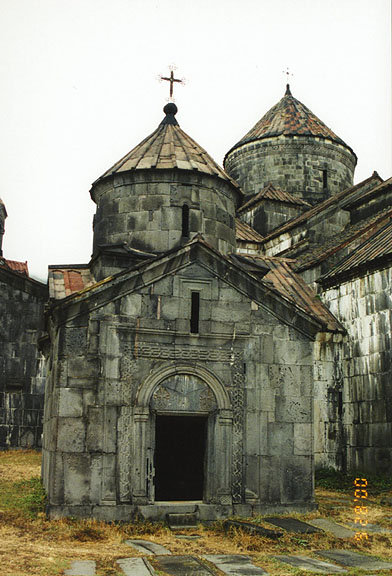
Haghpat
These two Byzantine monasteries in the Tumanian region dating from the period of prosperity during the Kiurikian dynasty (10th to 13th century) were important centres of learning. Sanahin was renown for its school of illuminators and calligraphers. The two monastic complexes represent the highest flowering of Armenian religious architecture, whose unique style developed from a blending of elements of Byzantine ecclesiastical architecture and the traditional vernacular architecture of the Caucasian region.
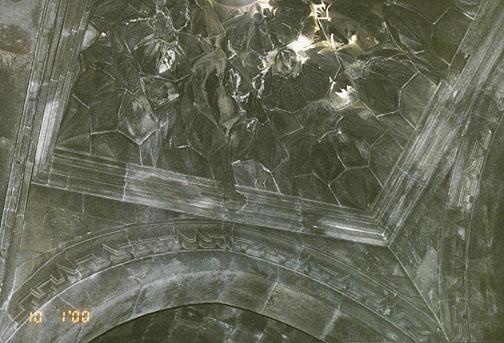
Geghard
(ceiling of church cut out of the rock)
The monastery of Geghard contains a number of churches and tombs, most of them cut into the rock, which illustrate the very peak of Armenian medieval architecture. The complex of medieval buildings is set into a landscape of great natural beauty, surrounded by towering cliffs at the entrance to the Azat Valley
|
The
Cathedral and Churches of Echmiatsin and the Archaeological Site of Zvartnots |
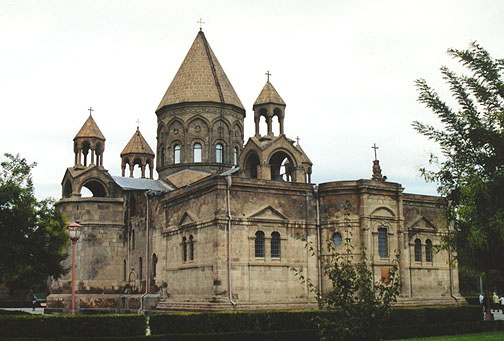
the
cathedral
(7th century ground plan)
The cathedral and churches of Echmiatsin and the archaeological remains at Zvartnots graphically illustrate the evolution and development of the Armenian central-domed cross-hall type of church, which exerted a profound influence on architectural and artistic development in the region.
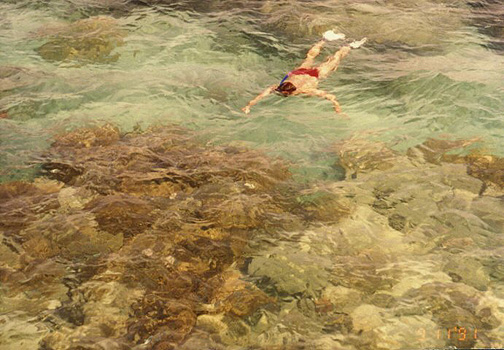
great snorkeling
The Great Barrier Reef is a site of
remarkable variety and beauty on the north-east coast of Australia. It contains
the world's largest collection of coral reefs, with 400 types of coral, 1,500
species of fish and 4,000 types of mollusc. It also holds great scientific
interest as the habitat of species such as the dugong ('sea cow') and the large
green turtle, which are
threatened with extinction.
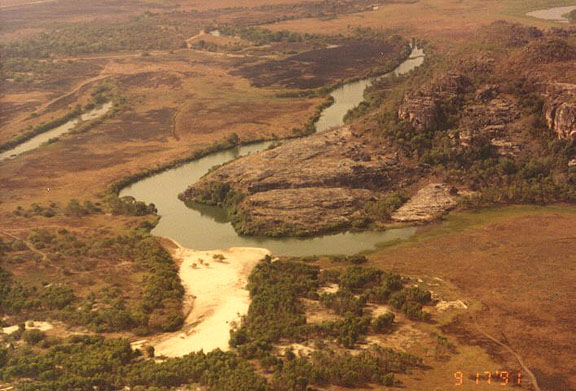
view from above
This unique archaeological and ethnological reserve, located in the Northern Territory, has been inhabited continuously for more than 40,000 years. The cave paintings, rock carvings and archaeological sites record the skills and way of life of the region's inhabitants, from the hunter- gatherers of prehistoric times to the Aboriginal people still living there. It is a unique example of a complex of ecosystems, including tidal flats, floodplains, lowlands and plateaux, and provides a habitat for a wide range of rare or endemic species of plants and animals.
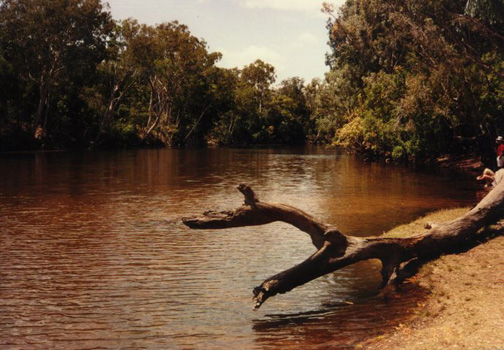
quiet river with saltwater crocodiles
This area, which stretches along the north-east coast of Australia for some 450 km, is made up largely of tropical rainforests. This biotope offers a particularly extensive and varied array of plants, as well as marsupials and singing birds, along with other rare and endangered animals and plant species.
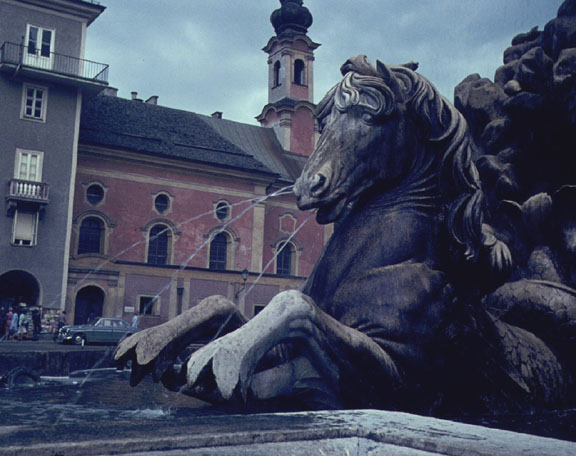
in the old town
Salzburg has managed to preserve an extraordinarily rich urban fabric, developed over the period from the Middle Ages to the 19th century when it was a city-state ruled by a prince- archbishop. Its Flamboyant Gothic art attracted many craftsmen and artists before the city became even better known through the work of the Italian architects Vincenzo Scamozzi and Santini Solari, to whom the centre of Salzburg owes much of its Baroque appearance. This meeting-point of northern and southern Europe perhaps sparked the genius of Salzburg's most famous son, Wolfgang Amadeus Mozart, whose name has been associated with the city ever since.
| The Palace and Gardens of Schönbrunn, Austria |

the garden in winter
From the 18th century to 1918, Schönbrunn was the residence of
the Habsburg emperors. It was designed by the architects Johann Bernhard
Fischer von Erlach and Nicolaus Pacassi and is full of outstanding examples of
decorative art. Together with its gardens, the site of the world's first zoo
in 1752, it is a remarkable Baroque ensemble and a perfect example of
Gesamtkunstwerk.
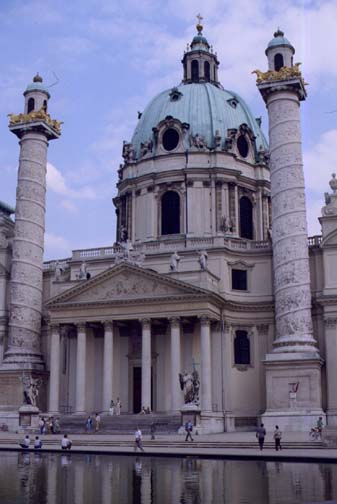
Karl's church
Vienna developed from early Celtic and Roman settlements into a Medieval and Baroque city, the capital of the Austro-Hungarian Empire. It played an essential role as a leading European music centre, from the great age of Viennese Classicism through the early part of the 20th century. The historic centre of Vienna is rich in architectural ensembles, including Baroque castles and gardens, as well as the late-19th-century Ringstrasse lined with grand buildings, monuments and parks.
|
The Walled City of Baku with the Shirvanshah's Palace and Maiden Tower, Azerbaijan |
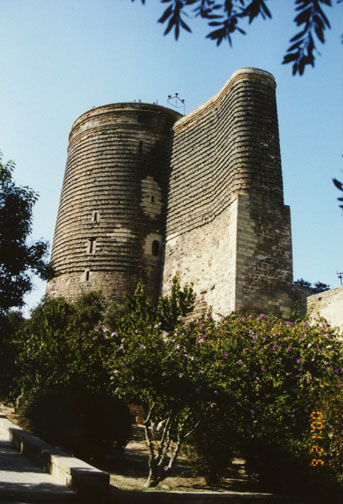
Maiden's Tower
Built on a site inhabited since the Palaeolithic period, the Walled City of Baku reveals evidence of Zoroastrian, Sassanian, Arabic, Persian, Shirvani, Ottoman, and Russian presence in cultural continuity. The Inner City (Icheri Sheher) has preserved much of its 12th-century defensive walls. The 12th-century Maiden Tower (Giz Galasy) is built over earlier structures dating from the 7th to 6th centuries BC, and the 15th-century Shirvanshahs' Palace is one of the pearls of Azerbaijan's architecture.
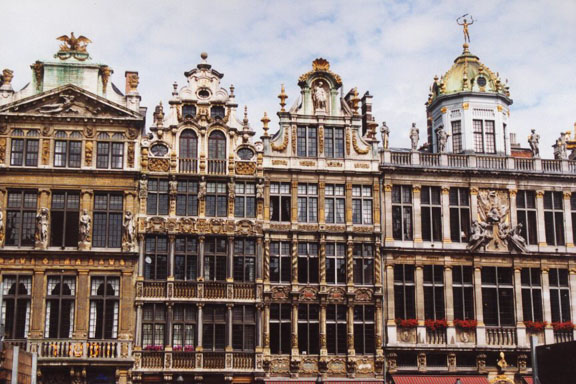
Guild houses on Grand Plaza
La Grand-Place in Brussels is a remarkably homogeneous body of public and private buildings, dating mainly from the late 17th century. The architecture provides a vivid illustration of the level of social and cultural life of the period in this important political and commercial centre.
| Historic Centre of Brugge, Belgium |
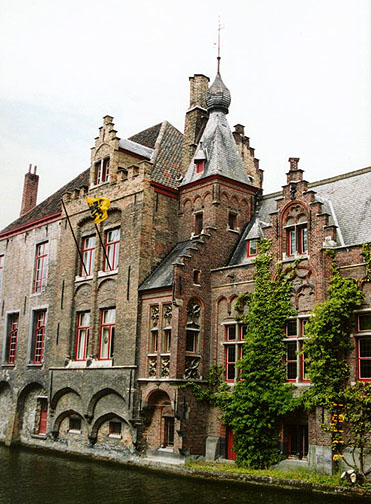
Guild buildings along the canal
Brugge is an outstanding example of a medieval historic settlement, which has maintained its historic fabric as this has evolved over the centuries, and where original Gothic constructions form part of the town's identity. As one of the commercial and cultural capitals of Europe, Brugge developed cultural links to different parts of the world. It is closely associated with the school of Flemish Primitive painting.
| Belize Barrier-Reef Reserve System, Belize |
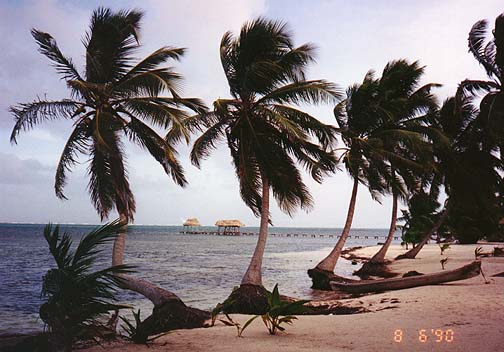
Ambergris Caye, Belize
The coastal area of Belize is an outstanding natural system consisting of the largest barrier reef in the northern hemisphere, offshore atolls, several hundred sand cays, mangrove forests, coastal lagoons and estuaries. The system's seven sites illustrate the evolutionary history of reef development and are a significant habitat for threatened species, including marine turtles, manatees and the American marine crocodile.
My Life List of World Heritage sites I have visited
![]()
Return to Favorite Experiences page
![]()